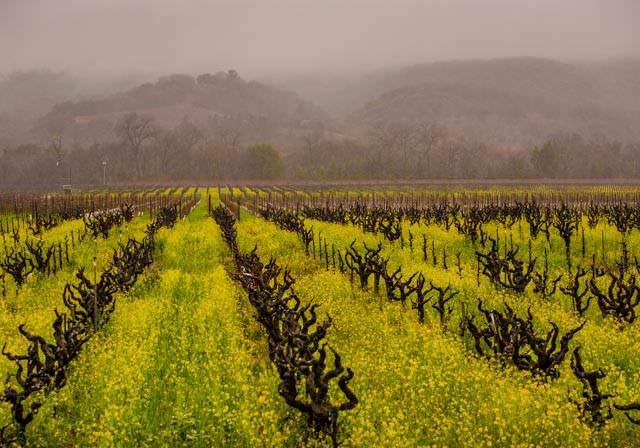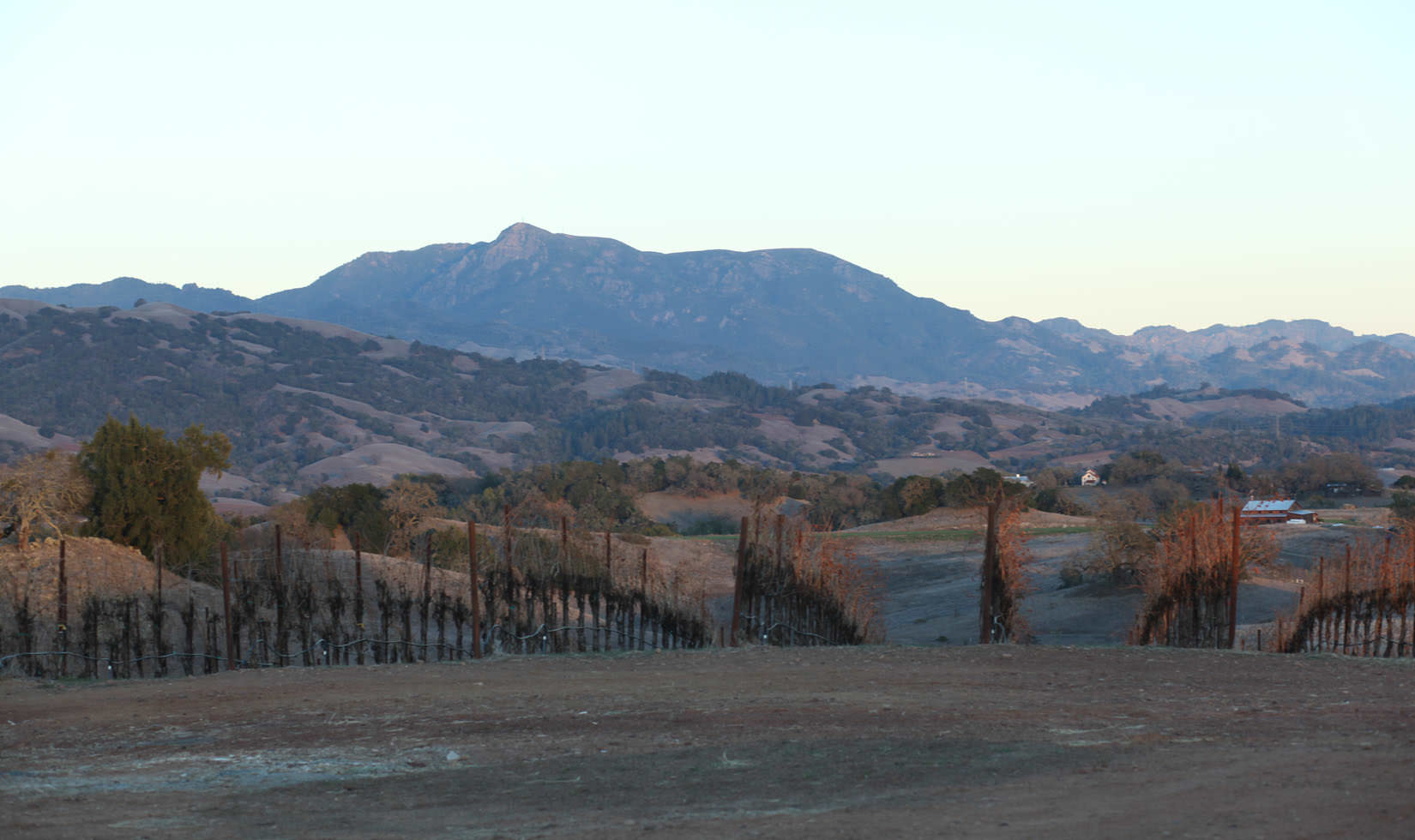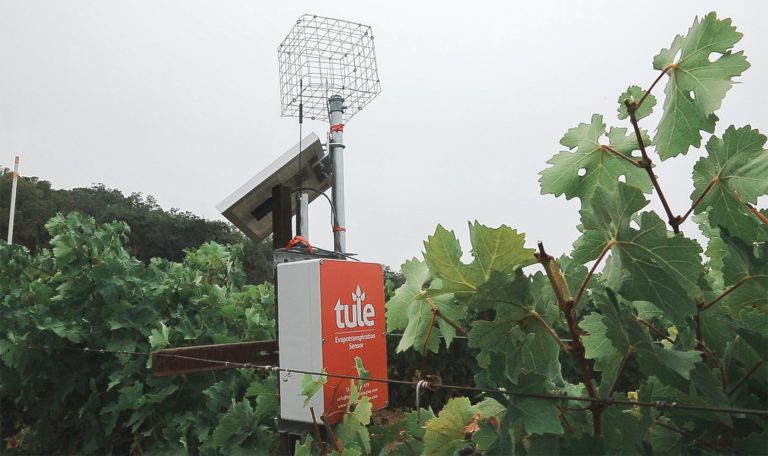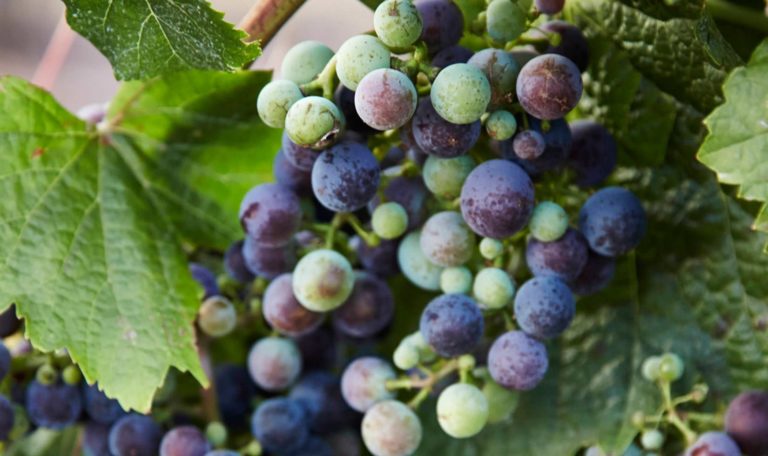Brian Brett, a poet and farmer, once said, “Farming is a profession of hope.” For farmers who aren’t in control of their water sources, hope might be the only option in the recording-shattering California drought year of 2014 in Sonoma County wine country.
Last month, while most of the United States braced against the bitterly cold temperatures of a rare polar vortex, that same weather system stalled a warmer, dry front over most of the West Coast, keeping our much-needed winter rains from falling. This time of year, the Sonoma County hills and the ground cover between the vineyard rows are usually a vibrant green with wisps of yellow from the sprouting mustard plants. Not in 2014. The vineyards have been shades of gold and brown, more typical of a dry summer.
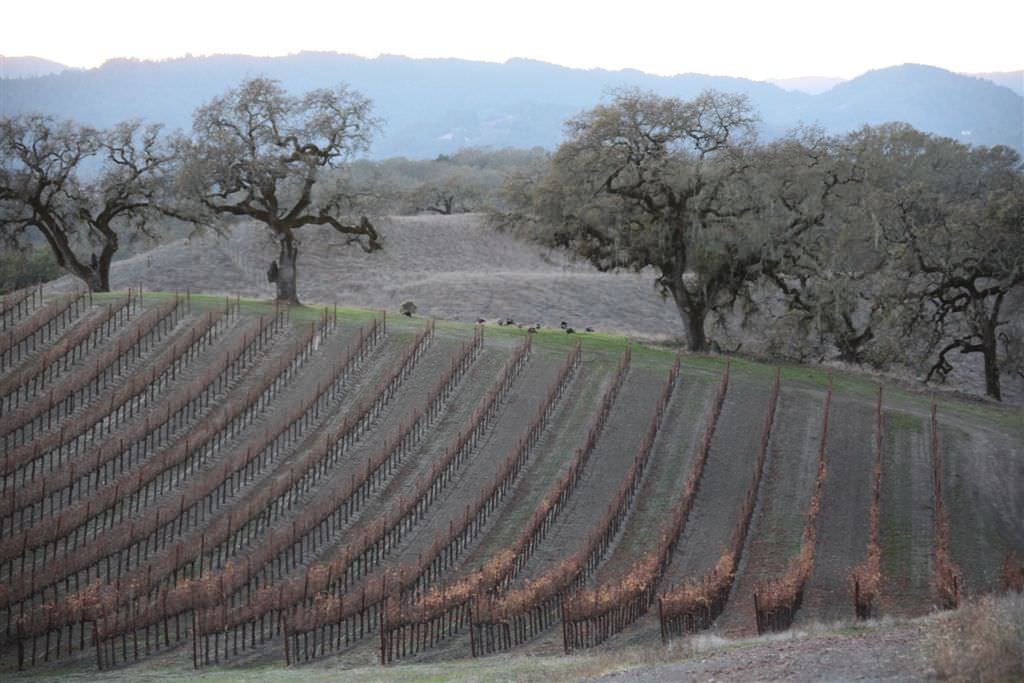
2013 marked the lowest rainfall year on record in 120 years, and California governor Jerry Brown declared a drought emergency in early January. Grapevines, like most crops, need a lot of water, not just for irrigation during the dry summer months, but also for frost protection during the spring if temperatures drop below freezing after the vineyards have awoken from winter dormancy. The rains did arrive last week, soaking Sonoma County with up to 15-plus inches in places. But, it’s almost a too-little-too-late scenario for some grapegrowers. About 15 more inches must fall by the end of the rainy season (June), which is highly unlikely, for the region to get back to its normal levels. Santa Rosa Airport normally gets 20.71, but had only 2.10 received by the end of January. So what does this mean for the vineyards? How could this lack of rainfall affect the growing cycle of the vine?
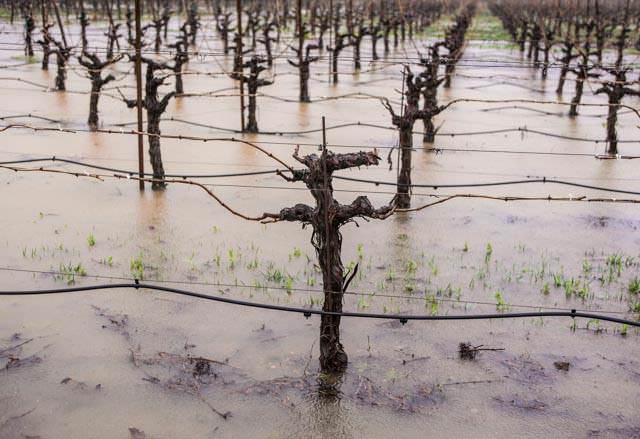
Well, that depends on many factors—first and foremost, where growers are getting their water from and where the vineyards are located. Some wine businesses have their own lakes and wells for water, while others get their supply from Lake Sonoma or Lake Mendocino, depending on location. Essentially, vineyards south of Healdsburg (or south of where the Dry Creek empties into the Russian River), get their water from Lake Sonoma, which is currently at 67% capacity, with multiple years of water supply remaining. Many vineyards between the towns of Healdsburg and Ukiah—those in the Alexander Valley and Mendocino County wine regions—get their water from Lake Mendocino, which only had three feet of water last week before the steady rainstorm helped it rise to 40% water capacity—a level still considered critically low. Both of these lakes are controlled by the U.S. Army Corps of Engineers, which was recently forced to cut the release of water from Lake Mendocino from the typical 4,000 cubic feet per second (cfs) to just 40. It’s almost as if the river was dry.
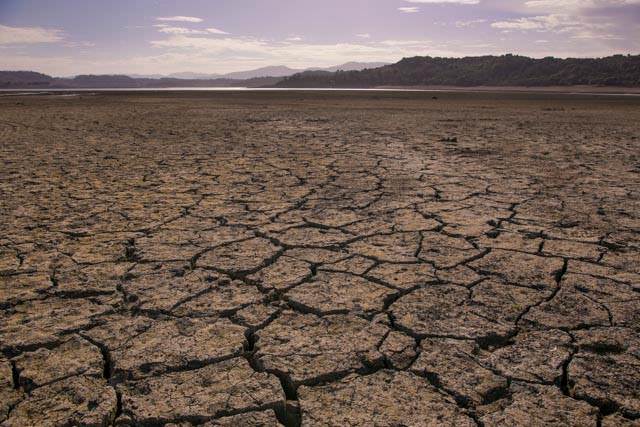
At Jordan Winery, we are very fortunate to have our own reservoirs—two lakes that have been here for decades. Our lakes were at 50% capacity last week and rose to 95% after about six inches of rain last weekend. Because of where the two lakes are situated—in the lower benchlands of the property below many cascading hills—our lakes capture a lot of the water run-off from the property. It’s a natural but efficient water capture and storage system.
Some of our growers in Alexander Valley have lakes and others deep wells, so most have water supplies for the time being. It’s important to realize, however, that the water table, which helps the flow of groundwater into wells, remains very low. The biggest concern for our growers this year is having sufficient water to frost protect this spring, as well as sufficient water to keep the vines productive throughout the growing season. Back in 2008, we experienced several freezing nights in April, and the shared water pool dried up from so many growers tapping it for frost protection; one of our growers lost most of their crop just after budbreak, and many Mendocino growers lost their crop before fruit set. A similar scenario this spring, when we have even less water on reserve, could be worse.
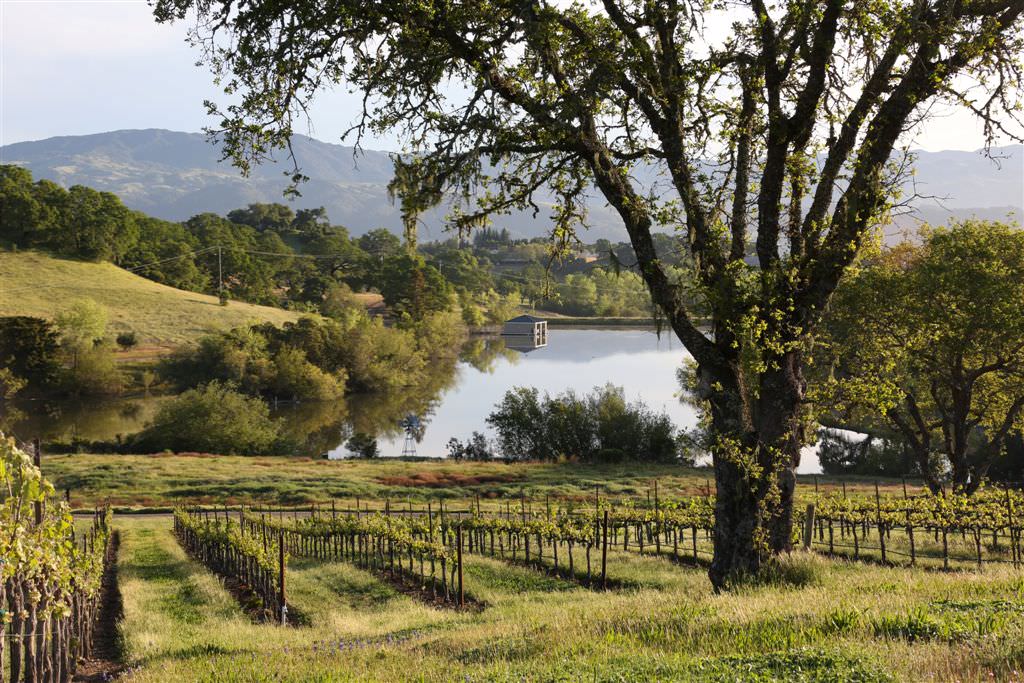
But 2008 isn’t the year the media keep referring to during California drought coverage; it’s 1976/1977—the worst drought in Sonoma County history before now. (Lake Sonoma was actually built as a response to the 1977 drought.) Jordan was one of the few wineries operating in the region during the winter of 1976 and 1977 (our first and second vintages). We dry-farmed the valley floor vineyards for our first 15 years and all of the hillside vineyards didn’t exist. Today, Alexander Valley has hundreds more acres planted, and the population has increased, placing more demands on the water supply. The current water table is far lower than it was in 1977—not only because of the drought, but also because of the increased water use as the population and agriculture have grown. If journalists begin to speculate on quality of drought vintages next, we hope they’ll contact Jordan Winemaker Rob Davis. He moved to Alexander Valley in 1976 and he remembers the dry conditions well. Both the 1977 and 1978 turned to our to classic, quality vintages for Jordan.
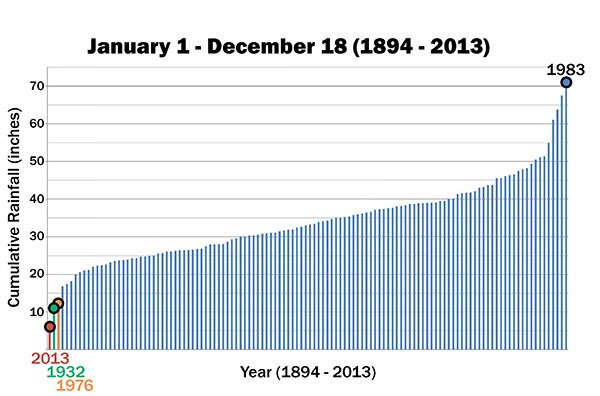
This year, we began irrigating the vineyards in January to get some moisture into the soil profile—the deep watering of about 2-3 feet down so that the grapevines’ roots have enough water for the growth boost they need when awakening from dormancy. Because the recent rainstorm was slow and steady over a 72-hour period, the vineyards reached field capacity (the amount of moisture the soil can hold) and then there was even a little run-off water as well. The grapevine’s deep roots need to receive enough water during the winter to help their growth progress quickly and smoothly during budbreak, flowering and fruit set. If it would have bucketed rain over a short period of time, the ground wouldn’t have been able to absorb the water fast enough, the vines’ roots wouldn’t have received enough water, and flooding and run-off would have been more of an issue. We got very lucky.
Friends and neighbors who rely on Lake Mendocino for their frost protection and irrigation water aren’t as fortunate.
So, how did Lake Mendocino get so low? Is the Polar Vortex system totally to blame?
Not quite.
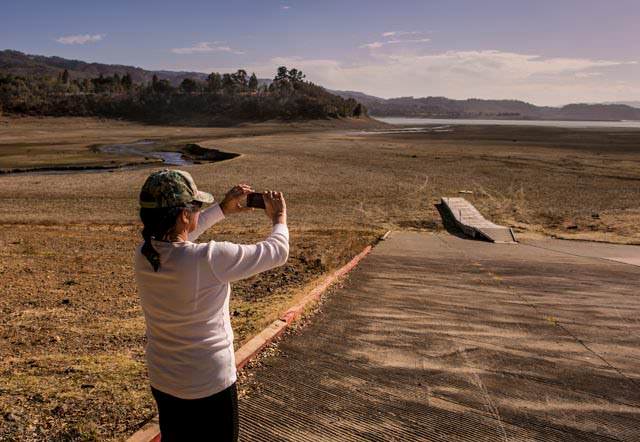
Just 14 months ago, in December 2012, Northern Sonoma had major rainfall. Lake Mendocino was near its maximum capacity, and the U.S. Army Corps of Engineers responded—they released water into the Russian River. A lot of water. The Corps operates strictly based on a set of rules and dam safety guidelines that were published in a manual 60 years ago. Water cannot exceed a certain level due to flood risks, so they released it, because, in theory, the rainy season was about to begin, so plenty more rain would come to replenish the lake, right?
Not in 2013.
The upside is that this California drought crisis will hopefully get the U.S. Army Corps of Engineers to embrace 21st century technology and change the way it handles flood control releases from Lake Mendocino and Lake Sonoma. Last week, one of our local congressman proposed a new bill, Fixing Operations of Reservoirs to Encompass Climatic and Atmospheric Science Trends Act (the FORECAST Act), which would implement new radar systems and other data technologies throughout the region, allowing the Sonoma County Water Agency to capture and analyze data, then share with the Corps so that they can make the best scientific decisions on when to release, or not to release, water from these vital lakes. City officials are also exploring the use of recycled water for crop irrigation.
With more rain in the forecast, we feel very good about the health of both our estate and grower grapevines during this drought. We are already working with our growers on grapevine canopy management strategies to make sure the plants can handle the possibility of having very little water during the summer. Keeping the canopies of the plants small and manageable will be key if the drought continues. Smaller canopies, less leaf area and more frequent, short irrigation cycles might be the difference in harvesting versus not harvesting grapes in 2014. (The plant could go into survival mode and shut down for the season if it doesn’t have enough water to support its leaves and fruit.) Filling the soil profile early in spring to give the root system moisture is a good strategy, as long as we have adequate water to sustain a typical canopy size of the vine throughout the entire growing season. If we end up with a low rainfall year, warmer than normal summer and a few heat spikes in September, there may be little we can do to defend the crop with limited water resources.
For now, the soothing sound of rain drops falling on the roof tiles of the Jordan chateau is a relief. It’s beginning to look like winter again; mustard grass is sprouting in vineyard rows and hills are changing from gold to vibrant green. Climate change continues to keep us on our toes as winemakers—and keeps the virtue of hope grounded in our profession.
